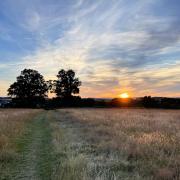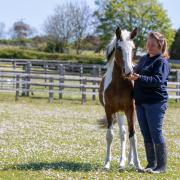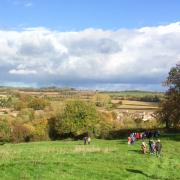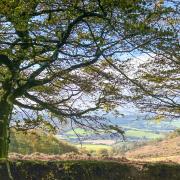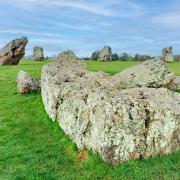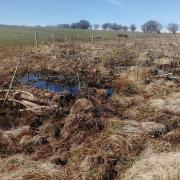Sarah Ford visits the pretty Somerset village of Allerford, where a team of blacksmiths is keeping traditional skills alive

Tourists from around the globe have been appreciating the recent £12 million transformation of the famous royal residence, Kensington Palace. And among those working on the major regeneration project of the London landmark (now home to the Duke and Duchess of Cambridge) was a team of talented craftsmen from a Somerset forge.

Blacksmiths and fabricators based on the edge of Exmoor National Park restored parts of the historic railings as well as making large new sections of estate railings and installing them in the grounds, where changes have made the iconic palace more welcoming and accessible.
The railings were created at Allerford Forge Blacksmithing in a West Somerset village with a much photographed packhorse bridge and fascinating rural life museum housed in the thatched old school room. Allerford is located on the National Trust estate of Holnicote and the forge is housed in what was once a farrier’s workshop while the former village cobbler’s building is now home to the Allerford Forge Gallery, where the team showcases its work to visitors.
Evidence of the former life of this long standing building alongside the river is provided by the many old wrought iron rings which would have been used as tie hoops for the horses. The forge was formerly run by Freddie Kent, who was farrier to the British Olympic equestrian team.
Joint owners of Allerford Forge Blacksmithing today are Kyle and Kieren Roberts, two brothers from nearby Roadwater who have brought their own different talents to this traditional business.
Kyle is a blacksmith, welder and fabricator who was an engineering apprentice at Bridgwater College. He has worked with leading blacksmiths in New Zealand and in the UK, such as Porlock’s high profile Jim Horrobin whose metalwork includes The Churchill Memorial Screnn at St Paul’s Cathedral and gates in the Victoria and Albert Museum.
Kieren, who has a background in building firms and running a local newspaper, joined the business about 18 months ago to take on more of the organisational and development side.
The other ‘Men of Steel’ at the forge include Dominic Hesp, a master blacksmith who has worked in the industry for over 35 years, and George Hunter, a stainless steel and cast iron specialist.
The traditional skills are still being passed down through the generations here at Allerford where Dom’s nephew, Tom Leader, is a blacksmith and fabricator; he completed his qualifications while working at the forge. George’s son Billy Hunter, is an engineering apprentice who has joined the team.
Kieren explains. “A lot of blacksmiths are one man bands but we are a team with the different skills of designing, blacksmithing, welding and fabricating. Everyone has their own role where they are best suited and that’s the key to doing things quicker and to a high standard.”
The wide variety of jobs undertaken by the team at Allerford Forge Blacksmithing include anything from mending a pontoon bracket for Watchet Marina and repairing flood defences to installing railings for the National Trust at Helstone Point.
The later was a particularly tricky job due to its location, Kyle recalls.
“We were working on the edge of a cliff in the middle of winter and it was half a mile to get there using quad bikes for part of the way and then walking and manhandling everything!”
The Rosegate Restoration in Porlock was also a special project for the forge. The historic gate separating a local school and churchyard was brought back to its former glory by the team and their work was followed by a celebration and church service.
“We have almost three sides to the business really,” says Kieren.
“There is the blacksmith side, where we carry out bespoke and architectural projects and restoration work. Then we’ve got the gallery where we can make bits and pieces in order to practise our skills and show them off in our onsite gallery and at events like the Dunster Show. And then we have the side which focuses on being a traditional workshop, as every village use to have, where we repair all things metal for locals and making all sorts of items of all scales. Our main skill is being able to design our own work using the skills and experience of the team.
“It’s about having a ‘can do’ approach to things. Instead of finding problems with something it’s finding the solution and part of that is that having the designers here who can design the work that needs to be done, but equally having the mix of youth and experience.”
Plans for the future include hopes for a much needed workshop extension as they are struggling with space.
Kyle explains: “We could take on more work but we don’t want to leave Allerford.”
The brothers also hope to have a separate gallery built so that Allerford Forge can be more of a destination spot for visitors.
“We get a lot of visitors who are walking in the area or visiting the museum or owl sanctuary,” says Kieren.
“We hope to put in glass screens so people can see what’s going on. Lots of groups of children visit the museum next door. They see sparks through the window and hear lots of noise and can’t help being interested!”
Perhaps Allerford Forge will be inspiring future blacksmiths for generations to come?
*See the blacksmiths working on the coal forge, visit the gallery and ask questions during the Allerford Forge open day on 19 April.




